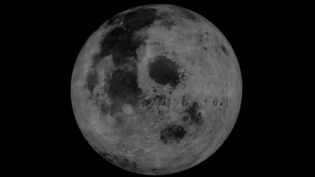Full moon: Difference between revisions
From Tardis Wiki, the free Doctor Who reference
No edit summary Tag: sourceedit |
m (Robot: Adding category Astronomical object stubs) Tag: apiedit |
||
| Line 7: | Line 7: | ||
In order to transform into their true form, [[Lupine Wavelength Haemovariform]]s used the [[moonlight]] from a full moon to gain enough energy for the transformation. However, in contrast, a high concentration of moonlight was also fatal. ([[TV]]:''[[Tooth and Claw (TV story)|Tooth and Claw]]'') | In order to transform into their true form, [[Lupine Wavelength Haemovariform]]s used the [[moonlight]] from a full moon to gain enough energy for the transformation. However, in contrast, a high concentration of moonlight was also fatal. ([[TV]]:''[[Tooth and Claw (TV story)|Tooth and Claw]]'') | ||
{{TitleSort}} | {{TitleSort}} | ||
[[Category:Astronomy from the real world]] | [[Category:Astronomy from the real world]] | ||
[[Category:Astronomical object stubs]] | |||
Revision as of 05:07, 3 June 2017
- You may be looking for the nightclub or the unproduced SJA story.
Full moon refered to when half of the Moon's surface was illuminated by the Sun and could be seen from Earth.
In order to transform into their true form, Lupine Wavelength Haemovariforms used the moonlight from a full moon to gain enough energy for the transformation. However, in contrast, a high concentration of moonlight was also fatal. (TV:Tooth and Claw)

